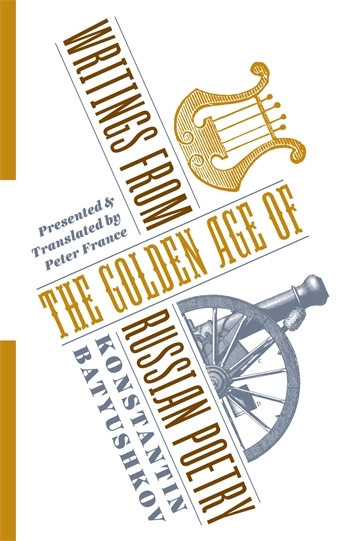Victor Navasky and Evan Cornog on the Art of Making Magazines
The following is an interview with Victor S. Navasky and Evan Cornog, editors of The Art of Making Magazines: On Being an Editor and Other Views from the Industry.
As the subtitles suggests, The Art of Making Magazines features the opinions and experiences of leading figures from the magazine industry, including Ruth Reichl, Tina Brown, and John Gregory Dunne. As you will read, Navasky and Cornog allow their illustrious contributors to answer:
Q: Why magazines now? Isn’t the digital revolution going to drive them from the field?
Editors: Good question. But forget what we have to say about it, and listen to our contributors. For example, here is what Felix Dennis, founder of Maxim and The Week (about whom the Wall Street Journal once asked in a headline “is Felix Dennis mad?”) told an audience of budding journalists when asked he same question:
“Relax.”
“Much has been written and a great deal and a great deal of hot air expended on the threat the Internet supposedly poses to those of us who make a living smearing hieroglyphics on paper. Most of it is so partisan that it can be difficult to tell the wood from the trees. The good news is that I’ve lived in that forest, making an excellent living there, for a very long time indeed.”
He proceeds to describe how his company did it “when larger publishers were running around like chickens with their head chopped off, chucking shareholder’ money at a medium which had no earthly chance of repaying their investment — for the simple reason that there were so few advertisers on the Web.” He also explains that while the web requires a whole new mindset, and is ultimately good news for writers, magazines won’t soon fade away.
Q: Who is this book for?
EDS: Writers, editors, publishers and readers.
For writers, there is the late John Gregory Dunne’s wise and witty advice for those who are just starting out: “The fact of the matter is that as you get older, you will discover that the singer is more important than the song. If you do magazine journalism, ‘why’ ultimately matters as much or even more than ‘who,’ ‘what,’ ‘where,’ ‘when,’ and ‘how.’ And not so much ‘why’ as a meditation on ‘why’. Or a contemplation on ‘how’ or ‘who.'”
For editors, there is, for example, the unique perspective of Bob Gottlieb, who was editor-in-chief of Alfred A. Knopf, before he became editor-in-chief of the New Yorker. He describes the difference between the two roles:
As a book publisher, according to Gottlieb, “You are there to keep the writer happy and feeling that he or she is protected,” which means that they have to feel that their editor “understands their work, sympathizes with their work, and is on their wavelength. They must believe that the editor can help them make the book not other than what it is, but better than what it is.”
Whereas when you are “the editor-in-chief of a magazine…it’s opposite. You are the living god. You are not there to please writers, but the writers are there to satisfy you because they want to be in the magazine, and you are the one who says yes or no.”
For readers, there is one axiom on which most of the contributors to this book seem to agree: that ultimately a magazine’s identity is determined by its readers. As Felix Dennis puts it, “the reader is king” or there is Michael Kelly’s story about his early days as a freelance writer. (Kelly went on to become editor-in-chief of the New Republic and then the Atlantic. When he was a young writer, Playboy commissioned him to travel the county writing about sex at a time when sex seemed to be coming out all over. He wandered the sex circuit interviewing the male beneficiaries of the new openness, and found what seemed to him “a rather grim place filled with grim, sad men, pathetic really, engaged in a kind of dismal and pathetic pursuit.” When he finally turned in his essay, his editor told him, “You really captured something here, and you’ve really got down on paper the sheer awfulness of these guys’ lives, how sad and lonely and pathetic they are.” Kelly said “thank you very much.” The editor then added, “at Playboy we have a word for these men,” and Kelly said, “Really?” And his editor replied, “Yes, we call them our readers.'”
Q: The lectures on which this book was based were given over a number of years, at a time of huge change in journalism. Any lessons to be drawn from what changed–and what did not change?
EDS: Ruth Reichl, the former editor of Gourmet, provides an insider’s view on what a magazine editor used to deal with on a daily basis. For example, on her first day at the magazine somebody mentioned an adjacency and she didn’t know what it was. As she explains it:
“In the magazine you have the well, which is the part where there are no ads. And then you have the articles that have adjacent ads. And the advertisers fight for these — they want to be adjacent to something that is attractive; they think the people who are reading that article will want to read their ads.”
“These adjacencies are sold. They are promised, for instance, that they are going to be in the first ten pages, or before the table of contents. And if you wonder why the table of contents is so damned hard to find in any magazine, it is because advertisers pay more to be in front of the table of contents. So one of the things you notice is the tables of contents moving back farther and farther and farther in magazines.
Six years later, Reichl returned to give a second lecture and this time she said that what she had done that that day was utterly and completely different from what she used to do. “In those days, I was editing a magazine, and everything I had to do was about editing the magazine. And today, almost nothing that I do has to do with editing a magazine. My role is now pretty much long-term planning, thinking about the issues, dealing with the art director. But it is no longer about my sitting there and writing every caption. I do read every final, but that will be the first time I’ve seen the captions. And six years ago, there was nothing that I didn’t see and agonize over. So it’s very much a changing role.
“And in the video that my publisher is going to take out on the road, the director asked me, ‘Where will the magazine be ten years from now?’ And all I could say is, ‘I don’t have a clue.'”
Q: What do the lectures, as a group, make you conclude about the future of the magazine business?
EDS: Well, for one thing the fact that a magazine as great as Gourmet is no more, suggests that none of us may have a clue. Ironically, it turns out that one of the best ways to think about the future is to look at what Tina Brown, who has edited a wildly heterogeneous variety of print magazines and now presides over a web site (The Daily Beast) as well, has to say about what she learned from the past — not only about the future of these creatures, but how to grow them:
“Whether it is a magazine or a TV show or a comedy act or a play or a book publishing house or a movie company, certain kinds of ambitious creative ventures have to be forged in live experiment — they must change course, try on identities, and even go up a blind ally or two before they find any inner coherence.
“I think almost the first thing they learn at West Point is that no battle plan survives contact with the enemy. Given what I call the ‘double v,’ the velocity of the variables, the venture either has to have enough time and money to fail for a time, or more realistically — because, frankly, who has that luxury? — perhaps it’s better to skip an ambitious launch and perfect the trial-and-error process under cover by starting out-of-town or building frequency very slowly. Elizabeth Hardwick once said, ‘Magazines are like mushrooms. they should grow in the dark.'”





